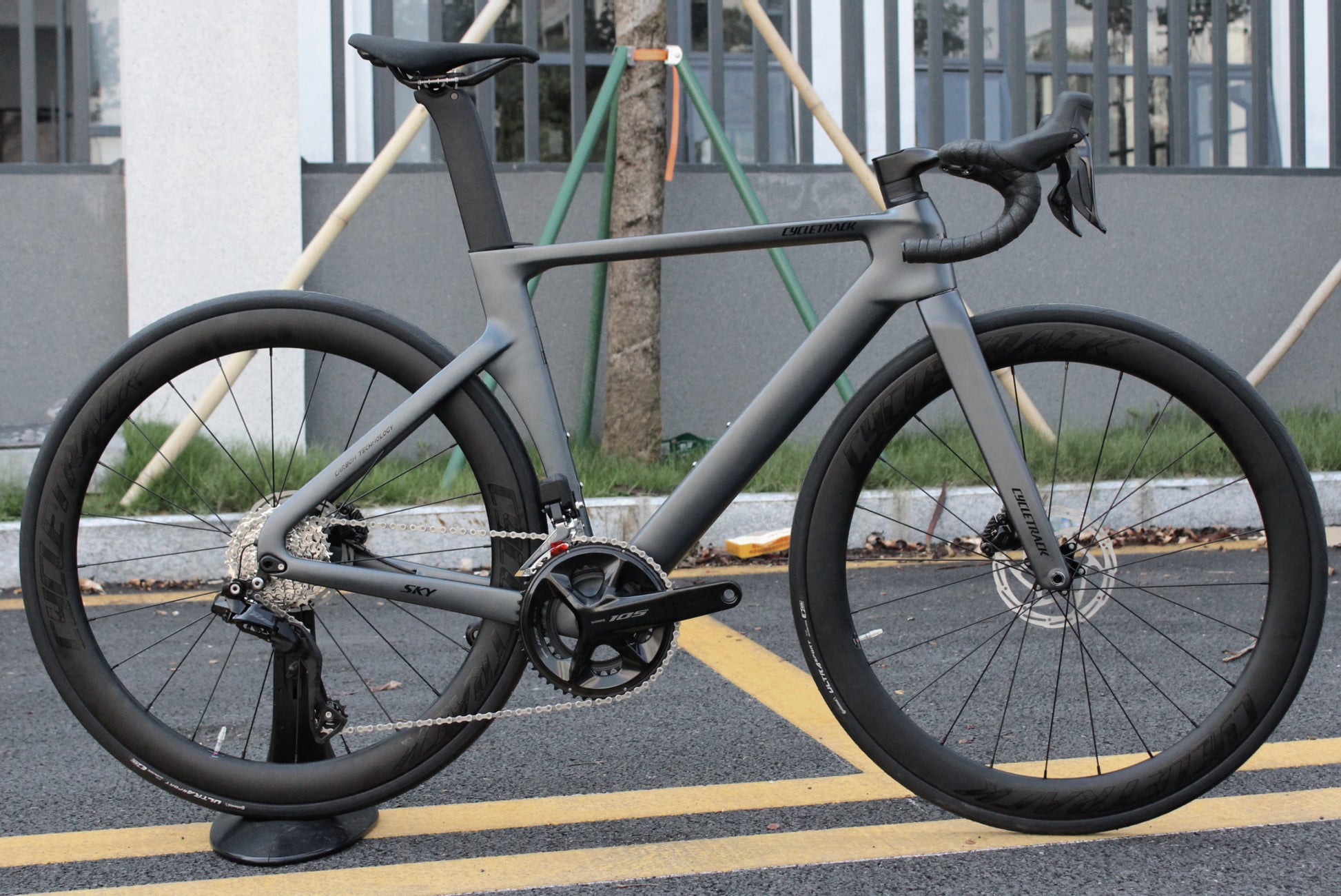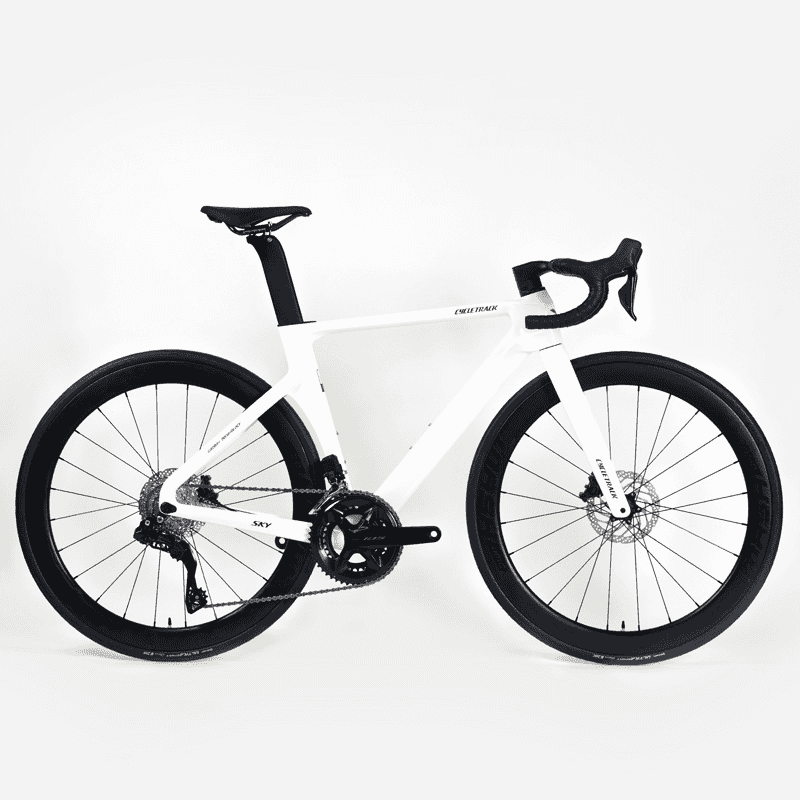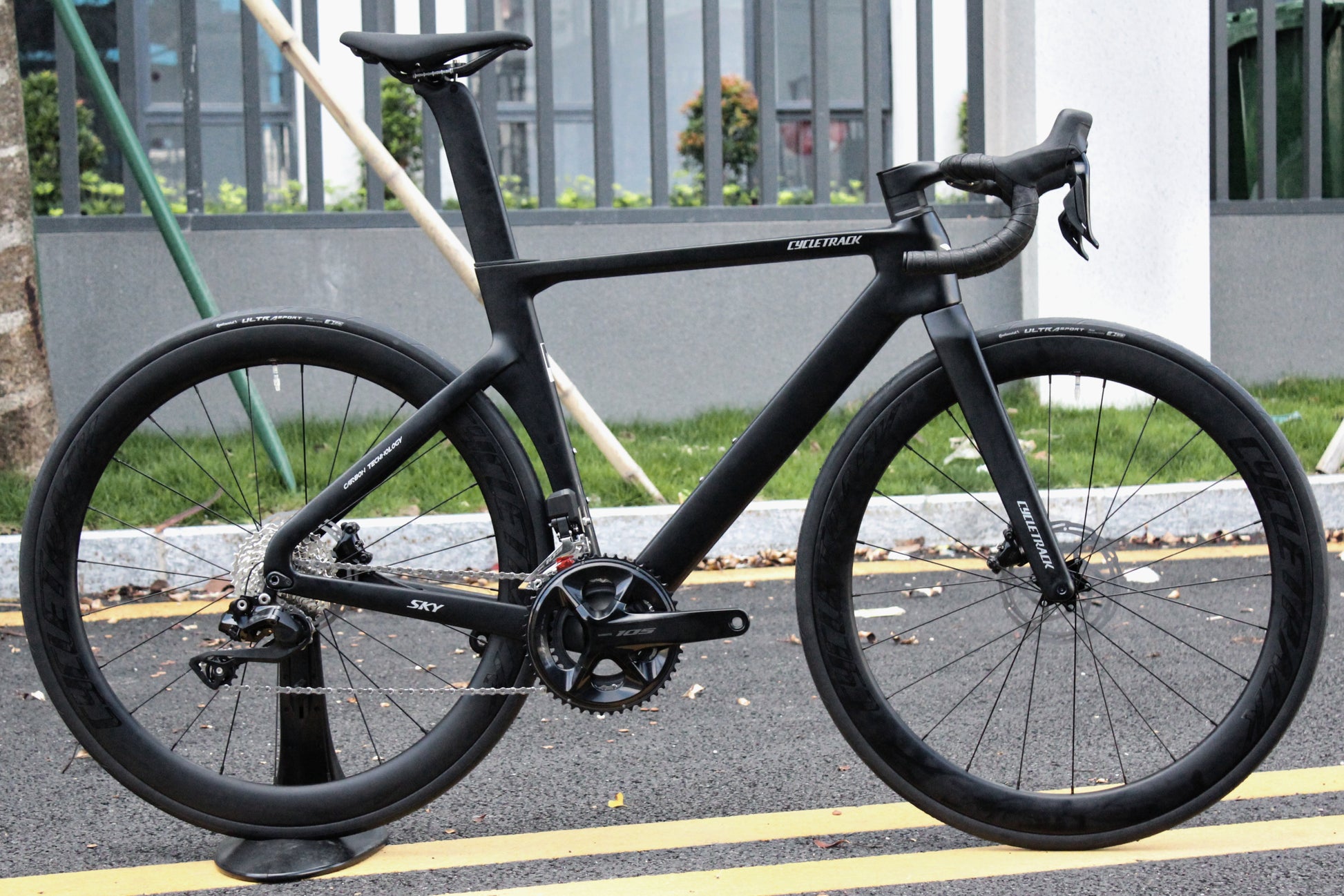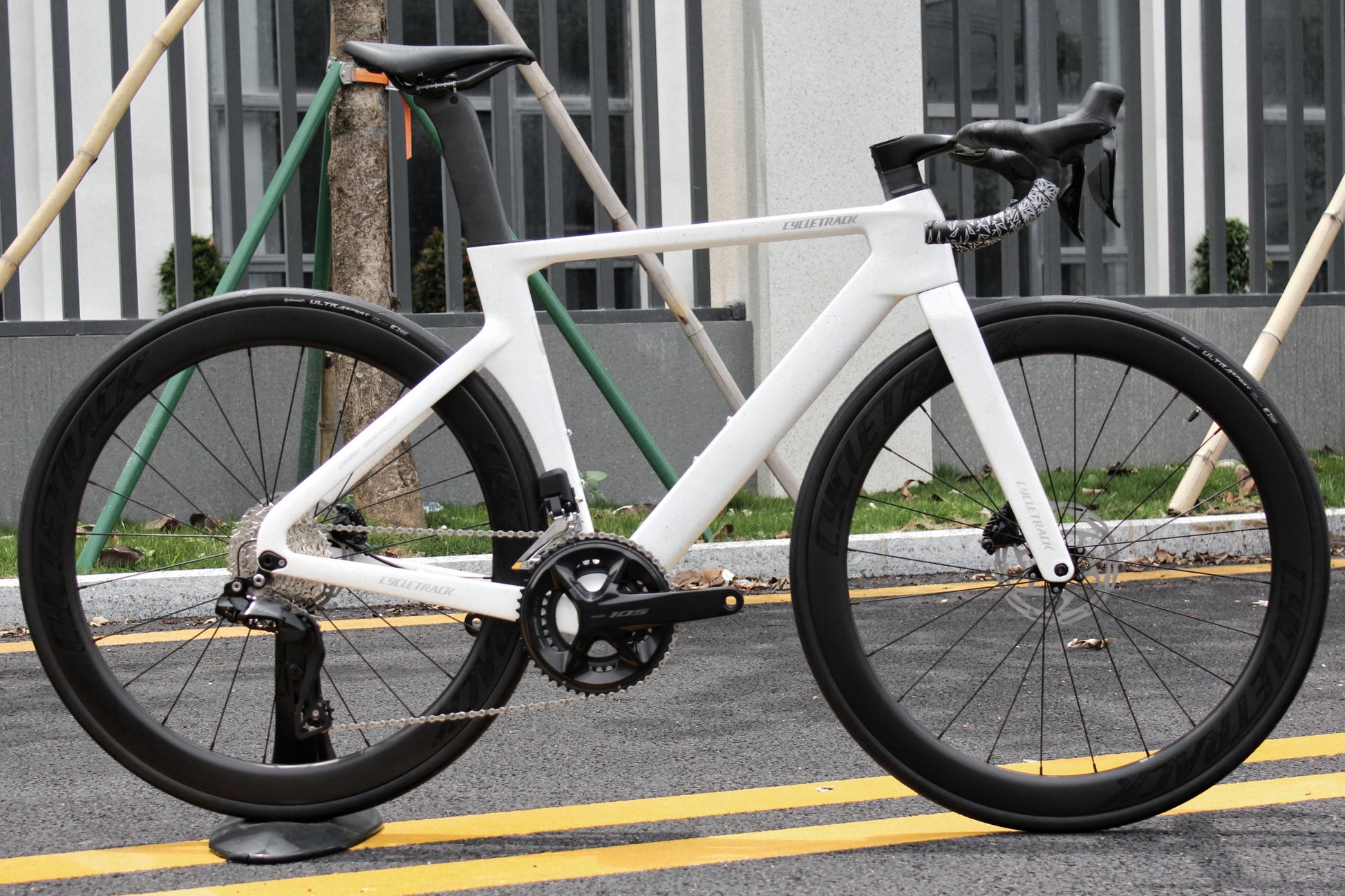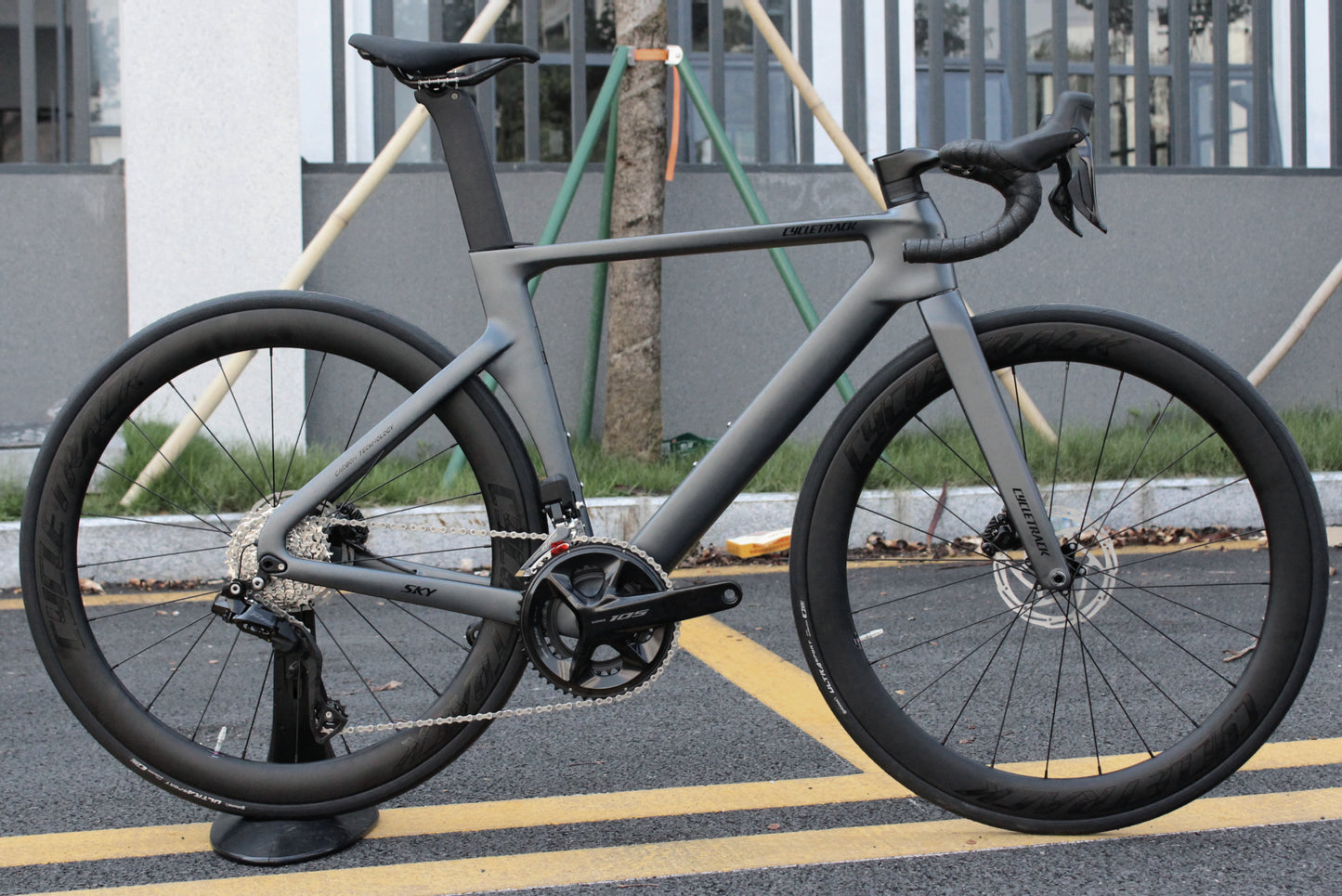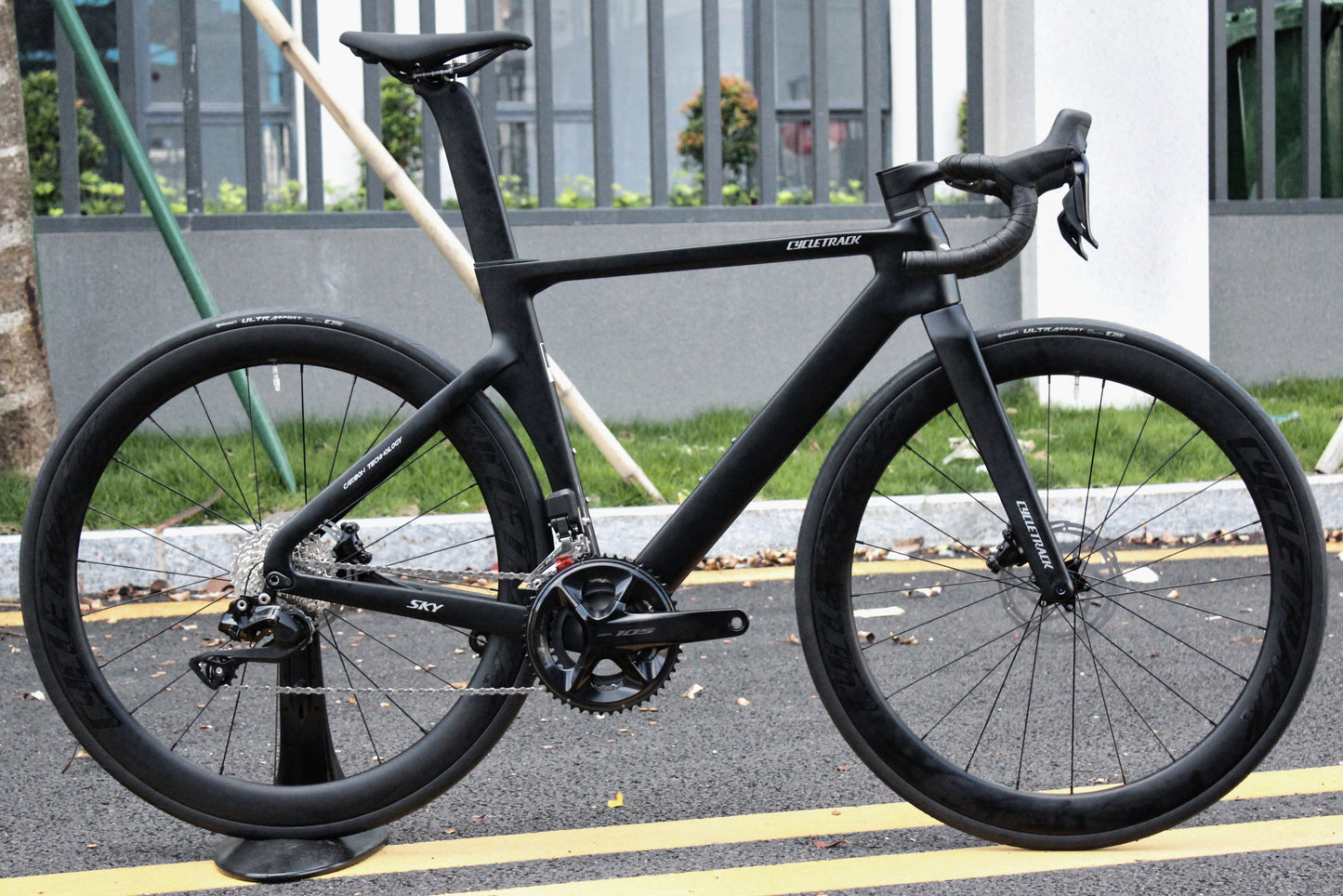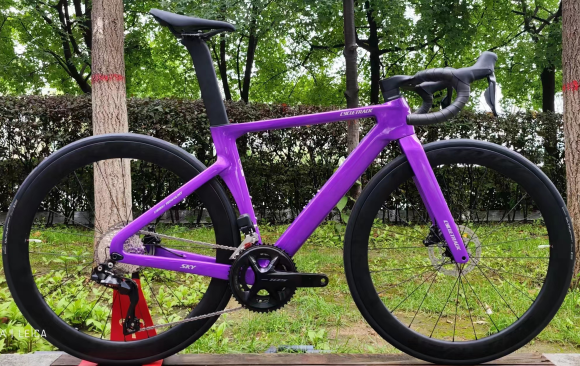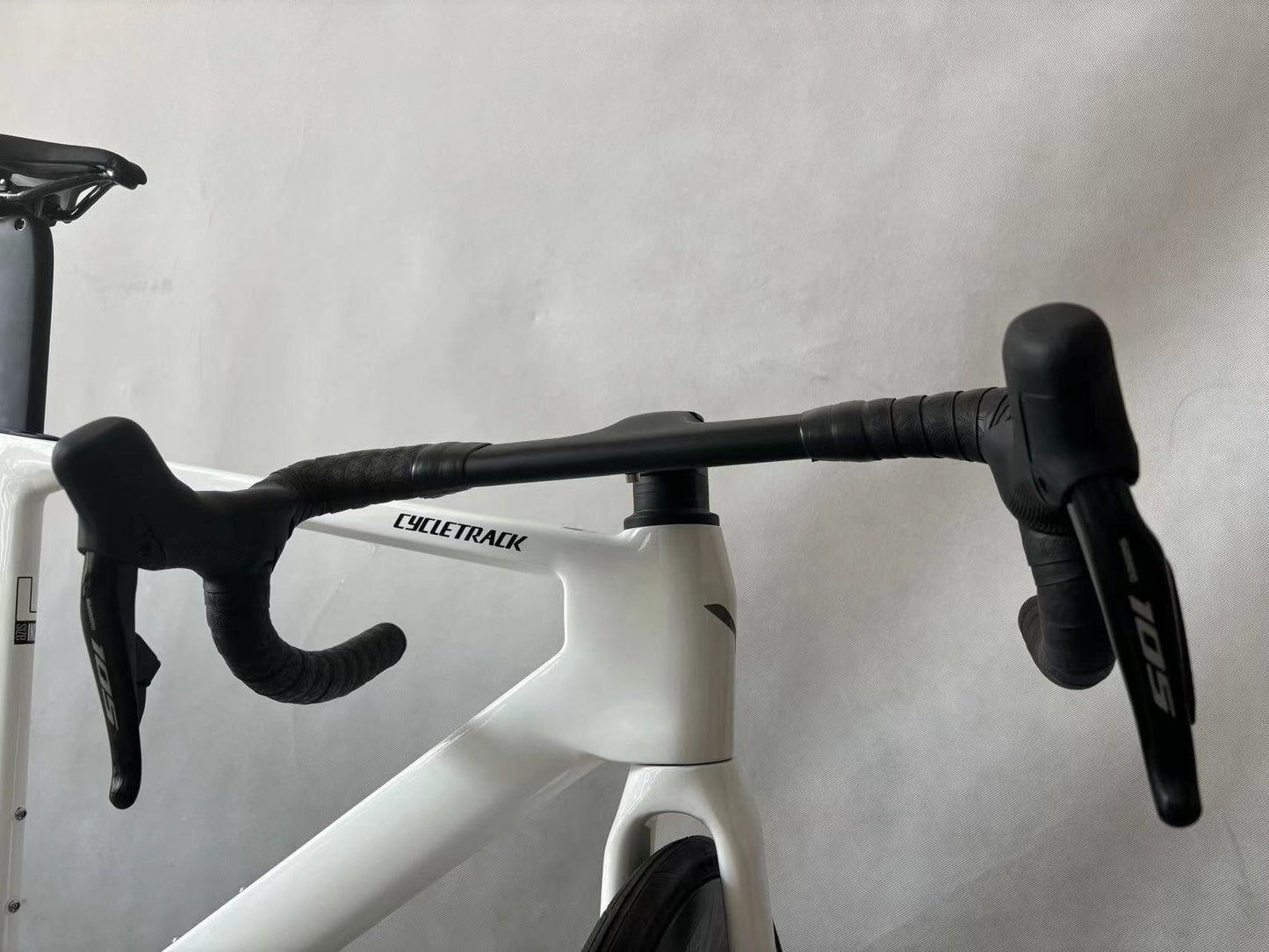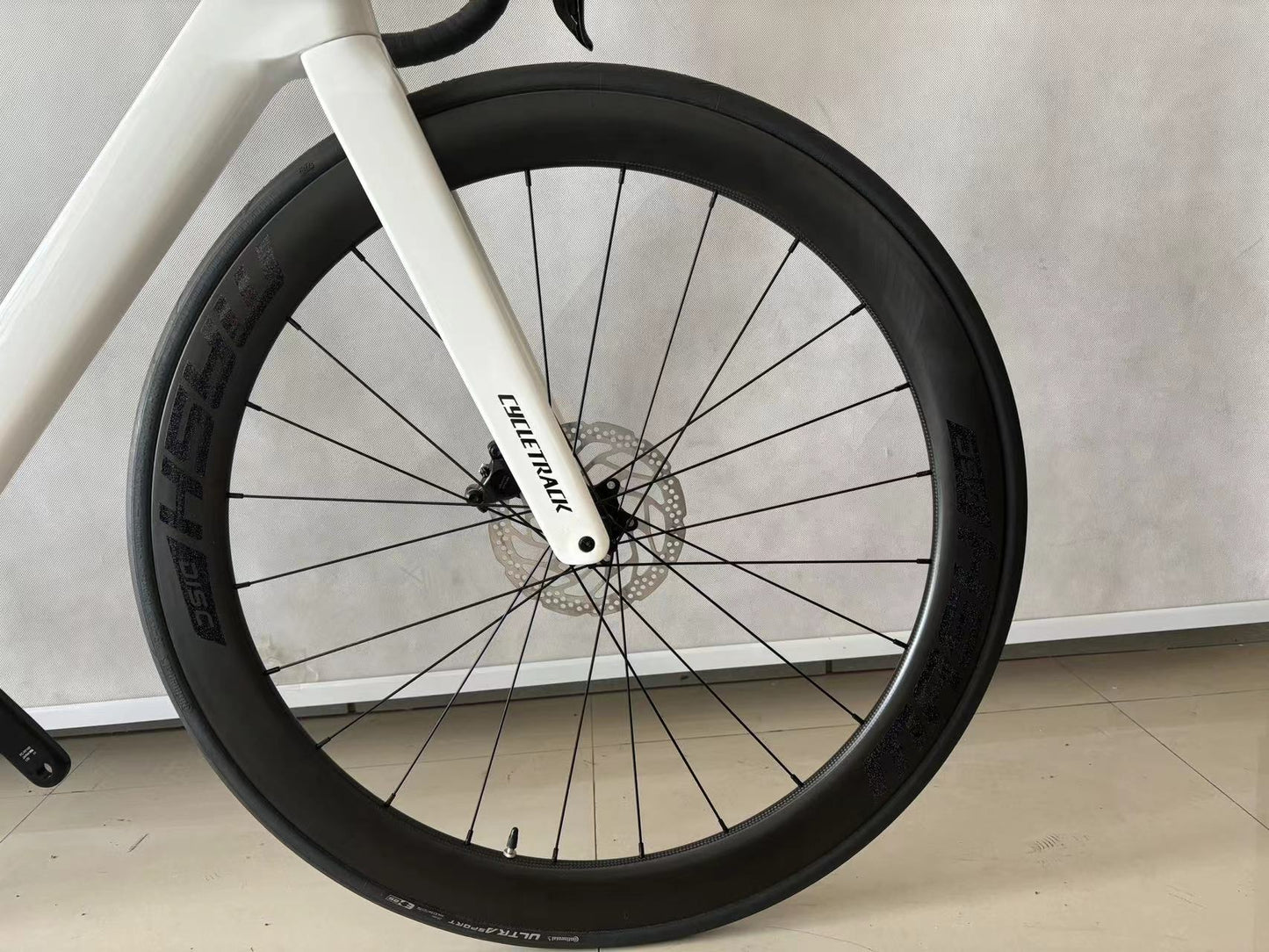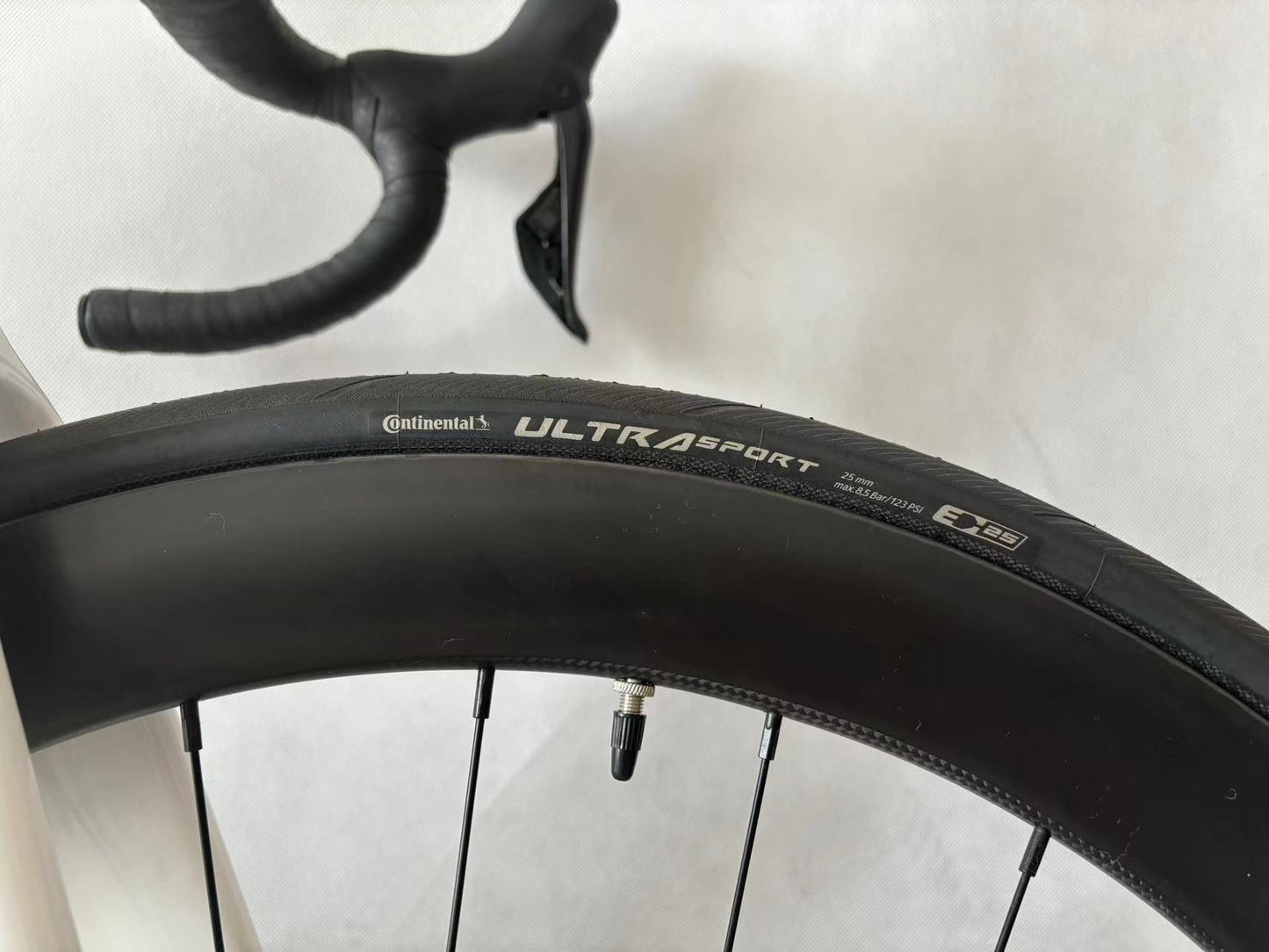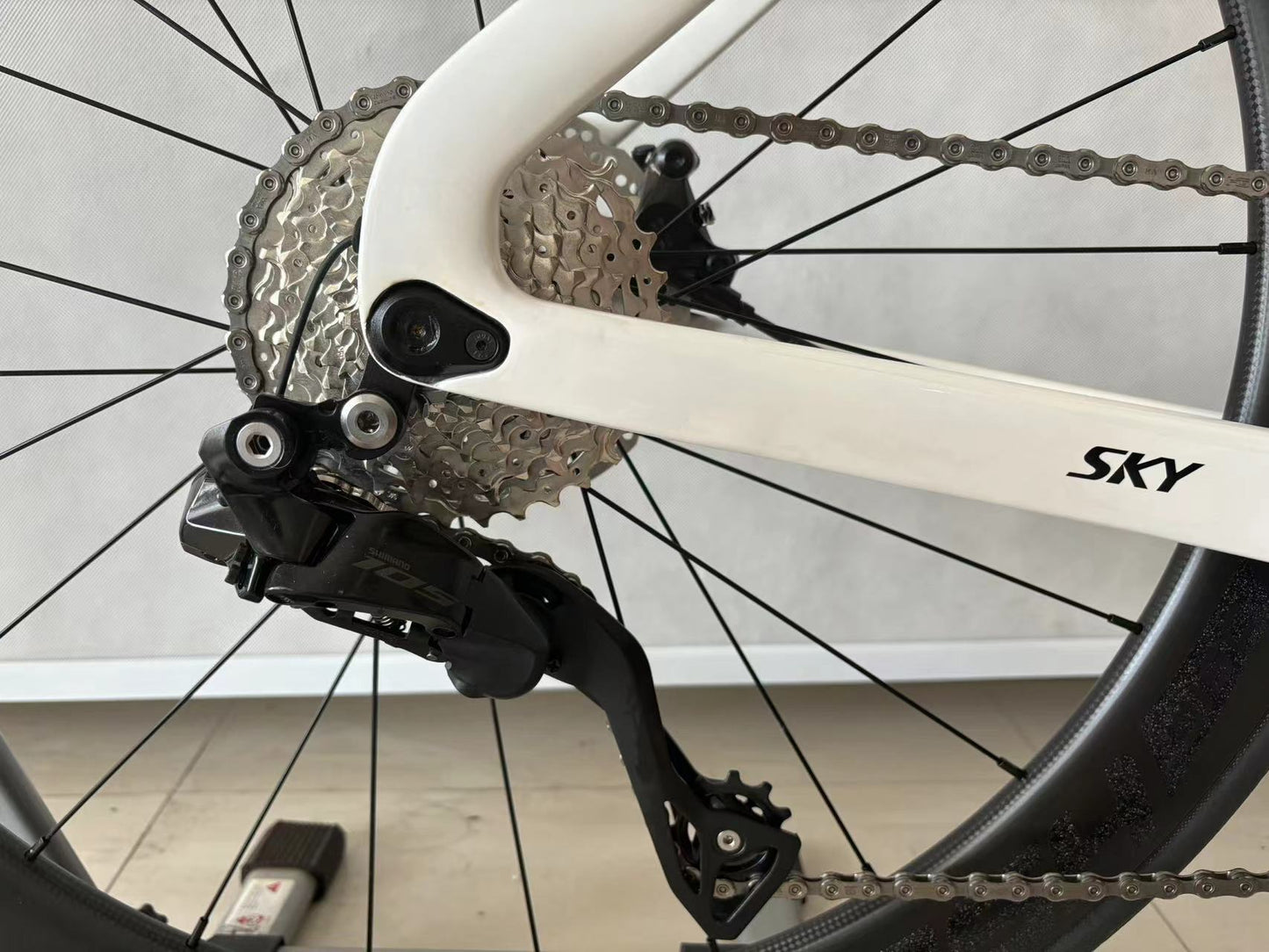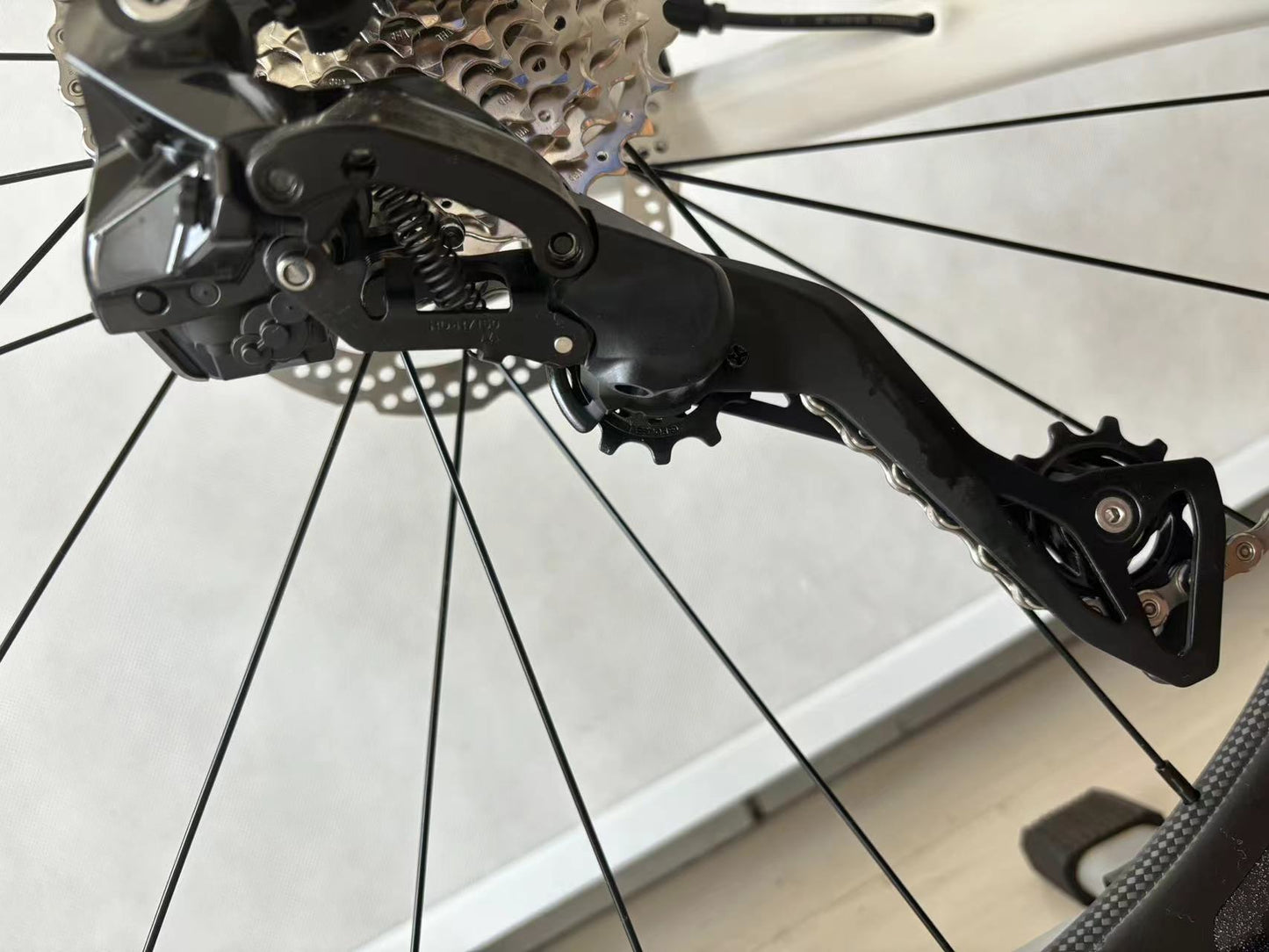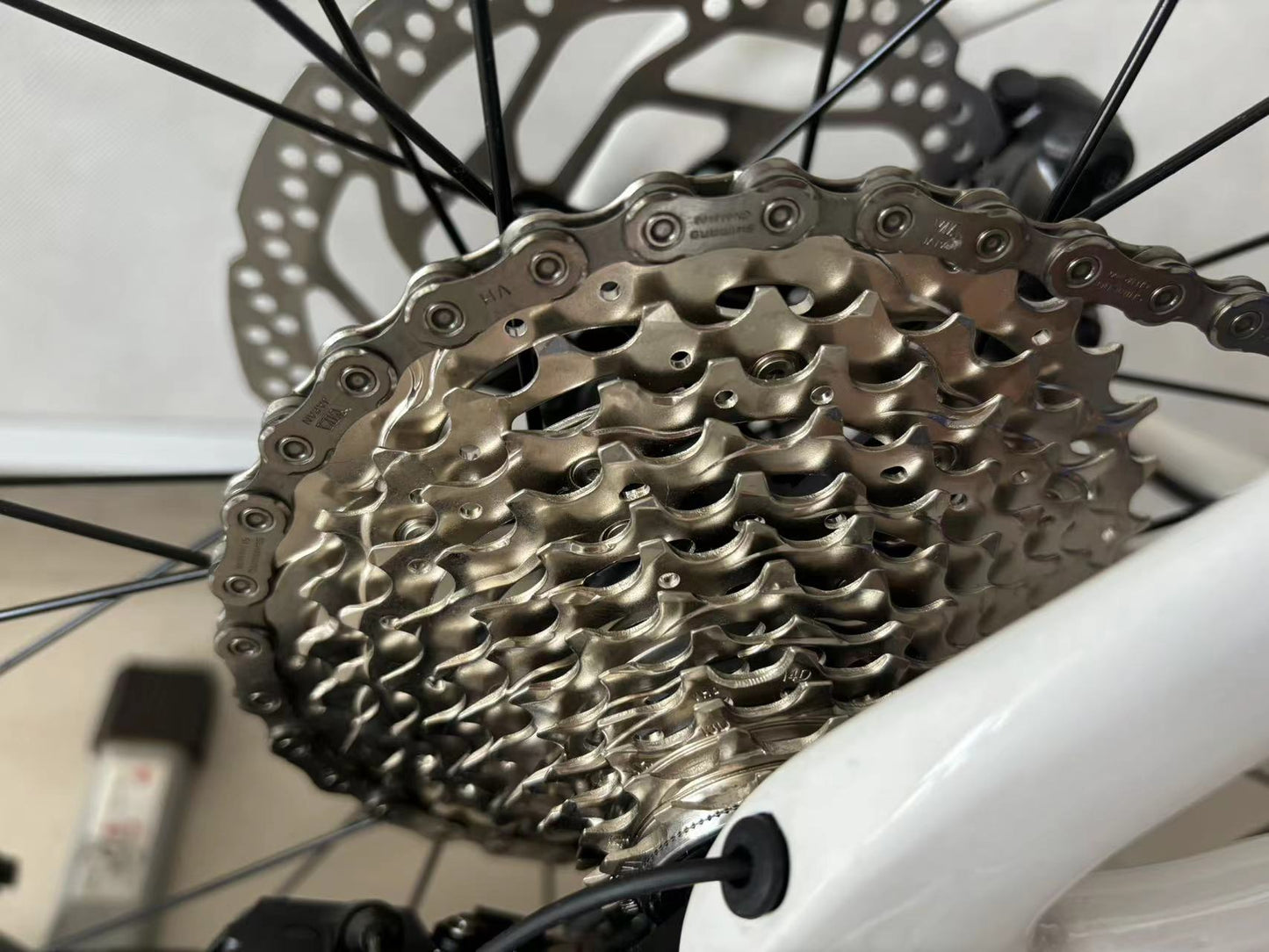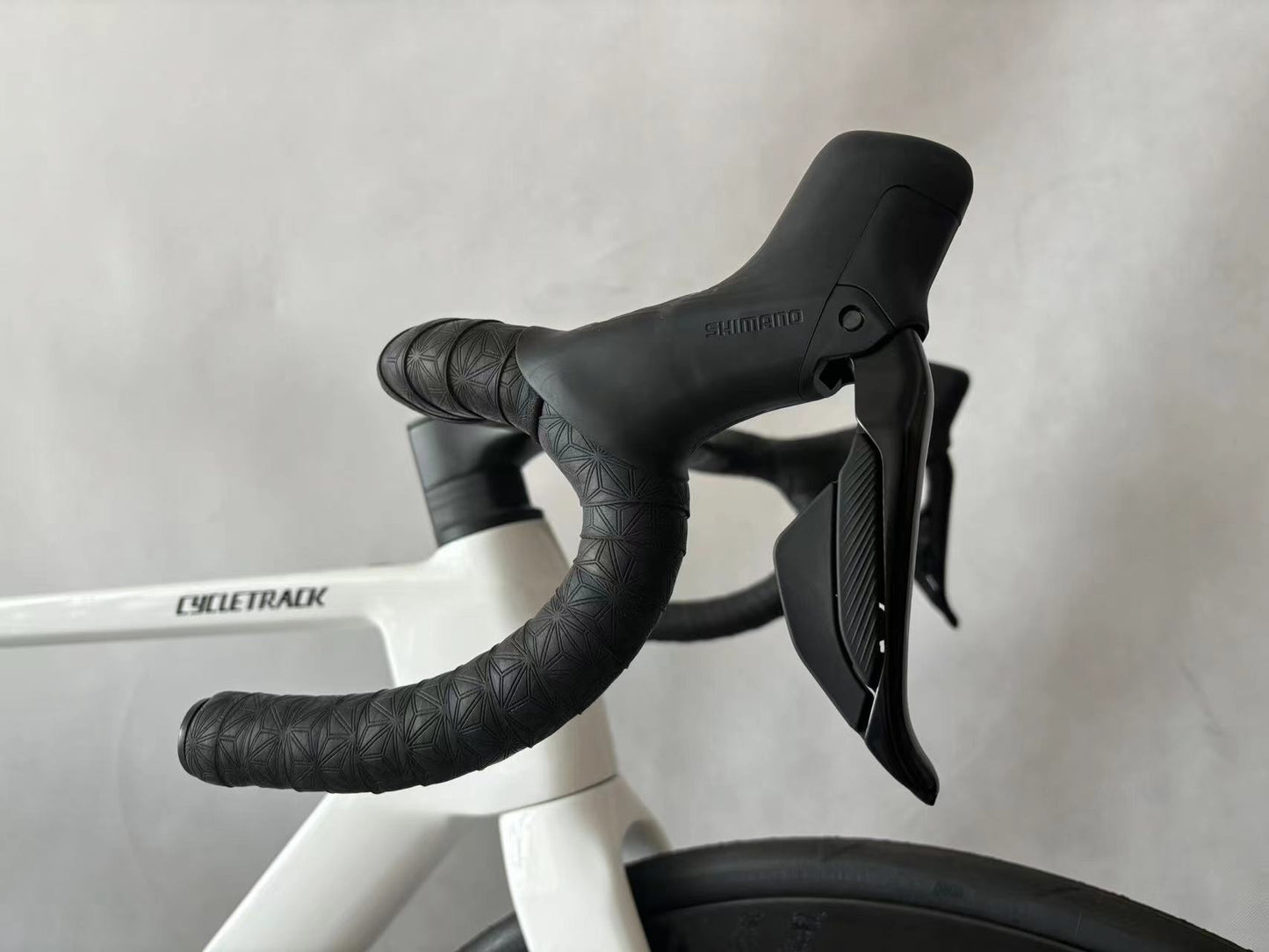Road bike or mountain bike? Are you suffering from "choice paralysis" when choosing different types of bicycles? How can you choose a bicycle that suits you?
Every type of bicycle has its strengths and weaknesses. When choosing a bicycle, it depends more on our "preferences", and factors such as the riding environment and the riding distance are also important considerations. Without further ado, the following is a list of various types of bicycles for you:
-
Road Bike
"Light and fast" is the byword for road bikes, making them the first choice for high-speed riding on paved roads. With large wheel diameters and narrow tires, they have extremely low rolling resistance, enabling higher speeds on the road. However, this also reduces their grip, and they are extremely vulnerable to "traps" such as sidewalks and vertical drainage channels. Since thieves also have a soft spot for them, they are not easy to park and store. They have almost no carrying capacity, and the riding posture is relatively aggressive, resulting in lower comfort. They are only suitable for sports and competitions.
Advantages: Light weight, high speed
Disadvantages: Relatively aggressive (hunched) posture, low passability, no carrying capacity -
Mountain Bike
As the name suggests, mountain bikes are designed for rough mountain trails. With disc brakes, knobby tires, high strength, and full-suspension models, they give many cyclists a great deal of confidence in riding.
All the technologies on mountain bikes are developed specifically for mountain roads. If your "ambition" is not in off-road riding, choosing other types of bicycles may be more suitable. A mountain bike on a paved road is not only slow but also makes the technologies bought at a high price useless.
Advantages: Strong braking power, good passability, off-road performance, can traverse mountain trails
Disadvantages: Heavy weight, knobby tires are very slow on flat roads, low speed -
Crossover Model - "Flat Bar Road Bike"
The flat bar road bike is different from the traditional drop bar road bike. Its basic features are flat bars, riser bars, and the use of 700C road bike wheels with wider tires. It can not only adapt to more road conditions but also provide better comfort with the wider tires. This type of bike is equipped with "V-brakes", "road calipers", and even disc brakes from mountain bikes.
For low-end "flat bar road bikes", the drivetrain mainly uses internal 3-speed or mountain bike drivetrain components. High-end models, on the other hand, use higher-speed internal gears or special "flat bar road bike" drivetrain components. The three major bicycle drivetrain manufacturers, Shimano, Campagnolo, and SRAM, all have shift levers designed specifically for "flat bars". The flat bar road bike is designed for comfortable, fast, and light riding on the road, and is mainly used for sports, leisure, entertainment, outings, travel, commuting, and transportation.
Advantages: Almost as fast as a road bike, comfortable riding posture
Disadvantages: Basically the same as those of a road bike -
Crossover Type - "Mountain Bike for Paved Roads (Mountain Road Bike)"
The basic definition of a "mountain road bike" is: converting a regular mountain bike into a high-speed mode for riding on paved roads. This involves replacing the original suspension fork with a rigid fork, using slick tires, etc., and it is only used for riding on paved roads (not for off-road riding).
However, it is inevitable that a "mountain road bike" neither has the off-road performance of a real mountain bike nor the speed and light weight of a road bike. This kind of "mountain road bike" that tries to cross over from a mountain bike to a road bike is in a very awkward position.
Advantages: Has the comfortable riding posture of a mountain bike, can "return to normal" by changing components
Disadvantages: Its speed and weight are inferior to those of a "flat bar road bike", its passability is inferior to that of a mountain bike, and it is "good at everything but excellent at nothing" -
City Leisure Bike
The city leisure bike carries more of the most original function of a bicycle - transportation. Its most attractive feature is its simplicity. The whole vehicle has a very simple structure and almost has the great advantage of "maintenance-free". With single-speed or internal gears, it is sufficient to meet basic riding needs. In recent years, city leisure bikes have leaned more towards the "retro" style. Exquisite, comfortable, and full of "literary style", it has also become a unique landscape in the city.
Advantages: Practical, elegant, indestructible (high reliability)
Disadvantages: Due to its main function of leisure and transportation, it has the characteristics of being "heavy and slow" -
Touring Bike
Among the categories on this "list", the touring bike ranks second in terms of practicality! Professional long-distance touring bikes are mainly made of steel frames, equipped with 700C road bike wheels or the more common 26-inch mountain bike wheels. The targeted design gives it extremely high strength and durability. Its strong carrying capacity also allows it to easily "bring along a lot of things", carrying months of supplies and equipment on the journey.
Advantages: High strength, strong durability, high versatility, large carrying capacity
Disadvantages: High weight, a bit cumbersome for short-distance use -
E-Bike (Electric Assist Bicycle)
The biggest difference between an E-Bike (electric assist bicycle) and an ordinary bicycle and an electric vehicle lies in its unique "hybrid power". "Electric assist" is an organic combination of pedaling torque and motor torque. The pedaling torque is the main force, and the motor torque is the auxiliary force. You can still ride when the motor is turned off, and it will not move forward when you stop pedaling. It is not like a pure electric vehicle that moves forward automatically when you turn the handle.
Isn't cycling all about using human power to pedal? Why do we need other power assistance? Mountain biking not only allows riders to enjoy the long downhill rides but also encourages them to pedal uphill with their own strength. In reality, not every cyclist is a professional athlete (especially female cyclists). They may not have the leg strength and physical fitness developed through long-term training. Before enjoying the pleasure of downhill riding on mountain roads, they may be exhausted by the uphill sections. Moreover, while downhill riding is exciting, it still requires the rider to have sufficient physical strength to control the bike. In this way, most of the fun of the ride is lost. And the E-Bike is the "best toy" to maximize the fun of long-distance and mountain riding.
Advantages: Any cyclist can easily enjoy various riding pleasures
Disadvantages: Needs to be charged, heavier body, more expensive than a regular bicycle -
Folding Bicycle
The folding bicycle is a leader in short-distance riding, commuting, and mixed riding (using other means of transportation or carrying a folding bike with a car for an outing, known as "4+2").
The folding bicycle is the most popular type of bike among urban office workers in big cities. When folded, it can even fit under a desk. In some cities in China, during peak commuting hours, folding bicycles can be connected with public transportation such as buses and subways, becoming the best solution for urban transportation.
Advantages: Compact, the first choice for urban commuters
Disadvantages: Various "performance indicators" such as passability, handling, strength, rigidity, and comfort have all decreased -
Extended Model of the Folding Bicycle - "Small-Wheeled Bike"
The "small-wheeled bike" has been popular in areas like Beijing, Shanghai, Guangzhou, Hong Kong, Macau, Taiwan, etc., where land is at a premium, for more than a decade. Its frame is like a scaled-down road bike. Its small size greatly reduces the space it occupies when parked at home. It not only meets the pursuit of speed by urban dwellers but also is more suitable for cyclists (including female cyclists) with a lower stature compared to large-wheeled bikes.
Advantages: Compact, suitable for cyclists with a lower stature and those with limited home space
Disadvantages: Various "performance indicators" such as handling and comfort are not as good as those of regular large-wheeled models -
Gravel Bike (Gravel Road Bike)
The Gravel Bike is not the same as a Cyclo-Cross (CX) bike. It is a kind of "versatile road bike" that can be used for commuting, touring, going up mountains, training, grocery shopping, and even racing (long-distance endurance races). In simple terms, it is a combination of a Cyclo-Cross (CX) bike (configuration) and an endurance road bike (comfortable geometry). Its unique style has quickly formed a trend, and it is deeply loved by riders in North America and Canada. It can also be seen from the recent model changes of brand manufacturers that the Gravel Bike has gradually replaced the original endurance, long-distance, and comfortable road bike models.
The cost of assembling or buying an entry-level Gravel Bike is not much different from that of a "mountain road bike". On the contrary, the Gravel Bike has better speed on paved roads, lower overall vehicle weight, better comfort, and the same strong passability. Why not choose it?
Advantages: Almost as fast as a road bike, almost as passable and off-road capable as an XC mountain bike, comfortable geometric design
Disadvantages: Not suitable for heavy off-road riding, knobby tires will also reduce its speed on paved roads -
Fixed Gear Bike (Fixed Gear/Dead Fly)
For a fixed gear bike (Fixed Gear), the rear gear and the rear wheel hub are completely fixed. In an ordinary bicycle, the freewheel is "free". That's why a fixed gear bike is also called a "dead fly bike". Precisely because the freewheel is "fixed", the rider can control the rear wheel to slow down and brake by pedaling. Of course, as can be seen from the much higher accident rate of fixed gear bikes compared to other types of bikes every year, a fixed gear bike without brakes is still very dangerous and poses a great threat to traffic. In fact, some countries have already prohibited fixed gear bikes without brakes from being ridden on the road. -
"Extreme Sports Bikes"
"Bicycle Motocross (BMX)", "Trials Bike", "Dirt Jump Bike", "Dirt Bike", etc. are all representatives of extreme sports bicycles. Since they focus more on skills and tricks, their uses are far different from those of ordinary bicycles.


